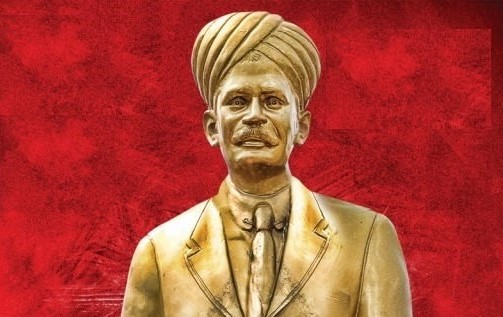There is a beginning for everything in the world. There has to be an inventor or a discoverer or else a pioneer of newer thnings the world has to see. Even the cinema which we see today was invented by Lumiere brothers and brought to India by Dada Saheb Phalke. But there is another personality who shared the same vision which Dada Saheb had. He is none other than Raghupati Venkaiah Naidu who brought cinema to the Southern part of India. And rightfully, he deserves to be called as the father of Southern Cinema (as there were no language based cinema at that point of time).
రఘుపతి వెంకయ్య స్వస్థానం మచిలీపట్నం. ఈయన ప్రసిద్ధ సంఘసంస్కర్త రఘుపతి వెంకటరత్నం నాయుడుగారి సోదరుడు. 1886లో తన 17వ ఏట వెంకయ్య ఫొటోలు తీయడం మొదలుపెట్టారు. 1910లో ఒక ‘క్రోమో మెగాఫోను’ను, 4000 అడుగుల ఫిలిమ్ ను విదేశాలనుండి తెప్పించుకొని వాటిని ప్రదర్శించడం ఆరంభించారు. ఒక టూరింగ్ టెంట్ ద్వారా ప్రదర్శనలిస్తూ ఆయన అప్పటి మూగసినిమాలకు సంగీతం వంటి ఆకర్షణలు జోడించేవారు.
Raghupati Venkaiah Naidu used to run a photo studio at 161, Mount Road, Chennai. When he got to know that the Gay Mount Company in London have invented a projector called “Chrono Megaphone” which could transmit moving pictures along with sound, he mortgaged his studio and ordered the projector for an amount of Rs.30,000, which was a huge amount in those days, along with 400 shorts.
Raghupati Venkaiah Naidu managed a show, to exhibit the projector, at Victoria Hall in Madras and wowed the audience. Later on he started exhibiting films through a touring theatre and conducted shows in Bangalore and other cities of Andhra. He also exhibited in Sri Lanka and Burma. Later on in 1912, Raghupati Venkaiah Naidu built a permanent theatre “Gaiety” in Madras. Later on he built “Crown” in Mint Street and “Globe” in Parasuvakam. In 1913, under the management of “Star of the East”, “Glass Studios” was established behind the premises of Globe theatre.
Raghupati Venkaiah Naidu sent his son, Raghupati Surya Prakash, to London to learn Cinematography. When his son came back, Raghupati Venkaiah Naidu produced a film named “Bhishma Pratigna”, under the direction of his son, Raghupati Surya Prakash, under the banner of “Star of the East”, in 1921. Later on he produced “Gajendra Moksham”, “Bhaktha Nandanar” and “Matsyavataar” which were all silent films.
The first Telugu mookie, Bhishma Pratignya, was directed by R. S. Prakash, son of Raghupathi Venkaiah Naidu in 1922 and Bhakta Markandeya in 1926 by C. Pullaiah but Bhakta Prahlada released in 1931 cornered the glory as the first Telugu film.
Raghupati Venkaiah Naidu retired from the company in 1929. He transferred all his responsibilities of the company to his son, Raghupati Surya Prakash. He deceased in the year 1941.
Raghupati Venkaiah Naidu’s life was remarkable as he was the one who started film movement in South India by daring to exhibit movies, to own a film studio and later on produce movies. He took the risk when there was no guarantee for the returns on his investments. He paved a way for the coming generations to follow and told the world that million others can depend on this form of entertainment not just for entertainment but also for livelihood. He created cinema out of nowhere and proved to be a successful one at that. Recognizing his contribution, the Andhra Pradesh Government has been giving the Life Time Achievement Award on his name and most of the present generation now comes to know that Award as Raghupati Venkaiah Naidu Award. Raghupati Venkaiah Naidu’s name shall remain forever in the annals of southern cinema history and his name shall be the first page anyone comes across while discussing the origin of southern cinema.
Source: Bharatjanani, Samayam
